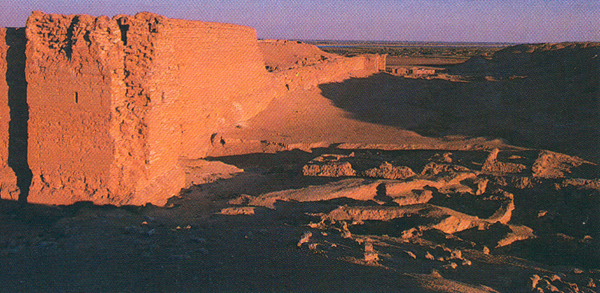Image Details

Nik Wheeler
Not thick enough, the walls of Dura-Europos , which loom over the eastern Syrian desert today, failed to protect this ancient Roman fortress from the Persian Sassanian army’s attack in 256 or 257 C.E. Although the Euphrates River (visible in the distance) protected the city from the east and, on the west, Dura’s residents buttressed the city wall by packing dry fill into the buildings and street inside the wall, the Persian invaders eventually conquered and later abandoned the city.
The desert sands concealed Dura until 1920, when British soldiers digging defensive trenches uncovered wall paintings from an ancient temple. By removing the sand and dry fill that preserved much of Dura, archaeologists later revealed a well-planned city established in about 300 C.E. by Greek settlers, who called it Europos. Other settlers called it by its Aramaic name, “Dura,” which might mean “wall.”
